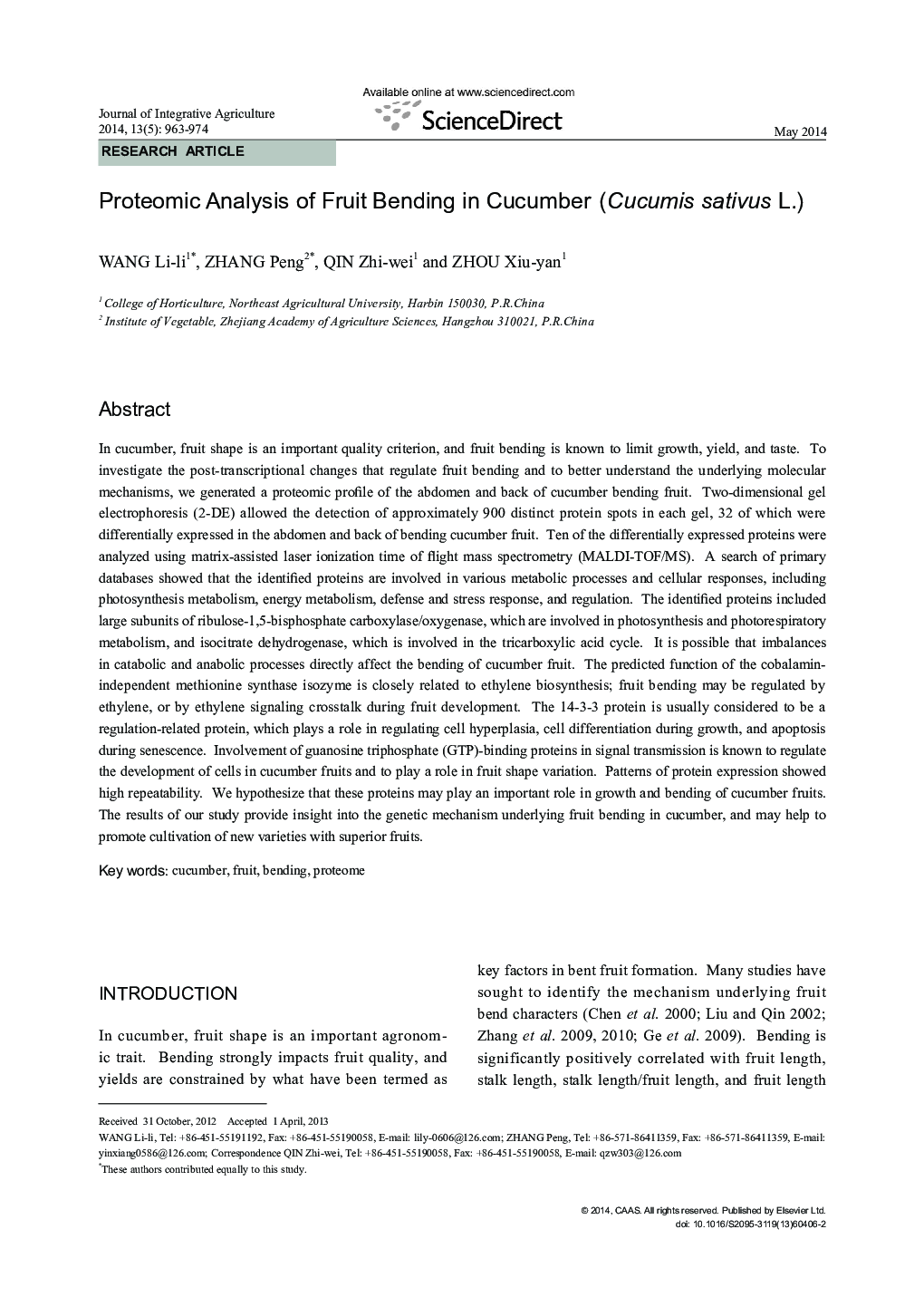| کد مقاله | کد نشریه | سال انتشار | مقاله انگلیسی | نسخه تمام متن |
|---|---|---|---|---|
| 4494512 | 1318718 | 2014 | 12 صفحه PDF | دانلود رایگان |

In cucumber, fruit shape is an important quality criterion, and fruit bending is known to limit growth, yield, and taste. To investigate the post-transcriptional changes that regulate fruit bending and to better understand the underlying molecular mechanisms, we generated a proteomic profile of the abdomen and back of cucumber bending fruit. Two-dimensional gel electrophoresis (2-DE) allowed the detection of approximately 900 distinct protein spots in each gel, 32 of which were differentially expressed in the abdomen and back of bending cucumber fruit. Ten of the differentially expressed proteins were analyzed using matrix-assisted laser ionization time of flight mass spectrometry (MALDI-TOF/MS). A search of primary databases showed that the identified proteins are involved in various metabolic processes and cellular responses, including photosynthesis metabolism, energy metabolism, defense and stress response, and regulation. The identified proteins included large subunits of ribulose-1,5-bisphosphate carboxylase/oxygenase, which are involved in photosynthesis and photorespiratory metabolism, and isocitrate dehydrogenase, which is involved in the tricarboxylic acid cycle. It is possible that imbalances in catabolic and anabolic processes directly affect the bending of cucumber fruit. The predicted function of the cobalamin-independent methionine synthase isozyme is closely related to ethylene biosynthesis; fruit bending may be regulated by ethylene, or by ethylene signaling crosstalk during fruit development. The 14-3-3 protein is usually considered to be a regulation-related protein, which plays a role in regulating cell hyperplasia, cell differentiation during growth, and apoptosis during senescence. Involvement of guanosine triphosphate (GTP)-binding proteins in signal transmission is known to regulate the development of cells in cucumber fruits and to play a role in fruit shape variation. Patterns of protein expression showed high repeatability. We hypothesize that these proteins may play an important role in growth and bending of cucumber fruits. The results of our study provide insight into the genetic mechanism underlying fruit bending in cucumber, and may help to promote cultivation of new varieties with superior fruits.
Journal: Journal of Integrative Agriculture - Volume 13, Issue 5, May 2014, Pages 963-974